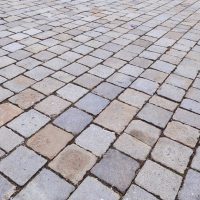Concrete is the most popular material for renovation projects, including patios and driveways. Concrete is often the ideal balance of durability and cost-effectiveness when compared to other choices. Modern solutions come in a variety of styles and colors to fit almost any design. Is there, however, equality among concrete products?
Proper Garden Maintenance Equals Less Work

Plant maintenance does not take long if you stay up with the regularly scheduled gardener’s chores. The less you do, the faster those maintenance tasks will disappear.
There are a surprising number of options for roof gardens and a surprisingly large number of designs for a one-room roof garden design. One rule of thumb with a roof garden is that the sides and rear of the roof garden are no wider than the walls of the house. This means that a lot of the drainage systems for the roof garden will have to be supplemented or replaced. A substantial amount of work needs to be carried out in order to make sure that the various drainage systems within the roof garden and the ground do not interfere with the performance or properties of the garden.
Drainage
If you have a roof garden or a patio garden, then drainage is also vital. A patio garden can incorporate a drainage system, but it needs to be hooked up in a practical way. You can, for instance, buy a system of pipes that sits in the soil and spreads the water out. Another alternative is to spread a wick of some type in the soil and make sure it is long enough to reach the edges of the patio.
As far as patio or terrace gardens are concerned, the drainage system will also have to be augmented or replaced. Undesirable containers clog up the drainage systems and make the terrace a potential fire hazard.
The Basics
Unless you are a professional landscape gardener or a contractor with access to a large amount of money, you will usually be working with what you have available and these will generally be fairly basic. It is, however, very important to get the basics right.
The best way to start is to think about the freestanding structures in your garden. These are usually the most unattractive in appearance, and most gardeners warn against them. If possible, locate leaky valves or pipes that are isolated from each other and are able to be easily turned off. Otherwise, you will need to determine the source of the leaks and isolate that from the rest of the system.
If the system is designed to be completely underground, then maintenance will become even more complicated. Even if there is an entire network of underground lines that need a lot of attention, the maintenance will still be high.
Another option is to restrict the movement of water in the soil. This can be achieved by locating impermeable surfaces around the garden, such as by using a trench. Alternatively, plants can be given slug-proof treatment.
If you choose a freestanding structure, then care must be taken to ensure that all the drippers and hoses are spread out and that the drippers are low enough to be buried. If you choose a wall-mounted structure, then care must be taken that water does not flow sideways onto the wall or fence.
Waterfalls
Waterfalls can be both grand and simple. Grand waterfalls are the most dramatic, being the focal point in a garden. They can also be the most expensive to build. Freestanding natural-sized waterfalls usually cost around $1,500, and can get way more expensive from there.
In Summary
We are all familiar with the idea of having the right garden for the space we are in, but an entirely different set of considerations exists if you are working with a roof garden, a patio garden or a roof garden with a southern aspect. Working with a more closed space, whether a roof garden or a garden on the side of the house, is more challenging. It is even possible to create a very tight-looking garden with lots of containers filled with very desirable plants, but it will need more lifting and shifting to make it effective and secure.



